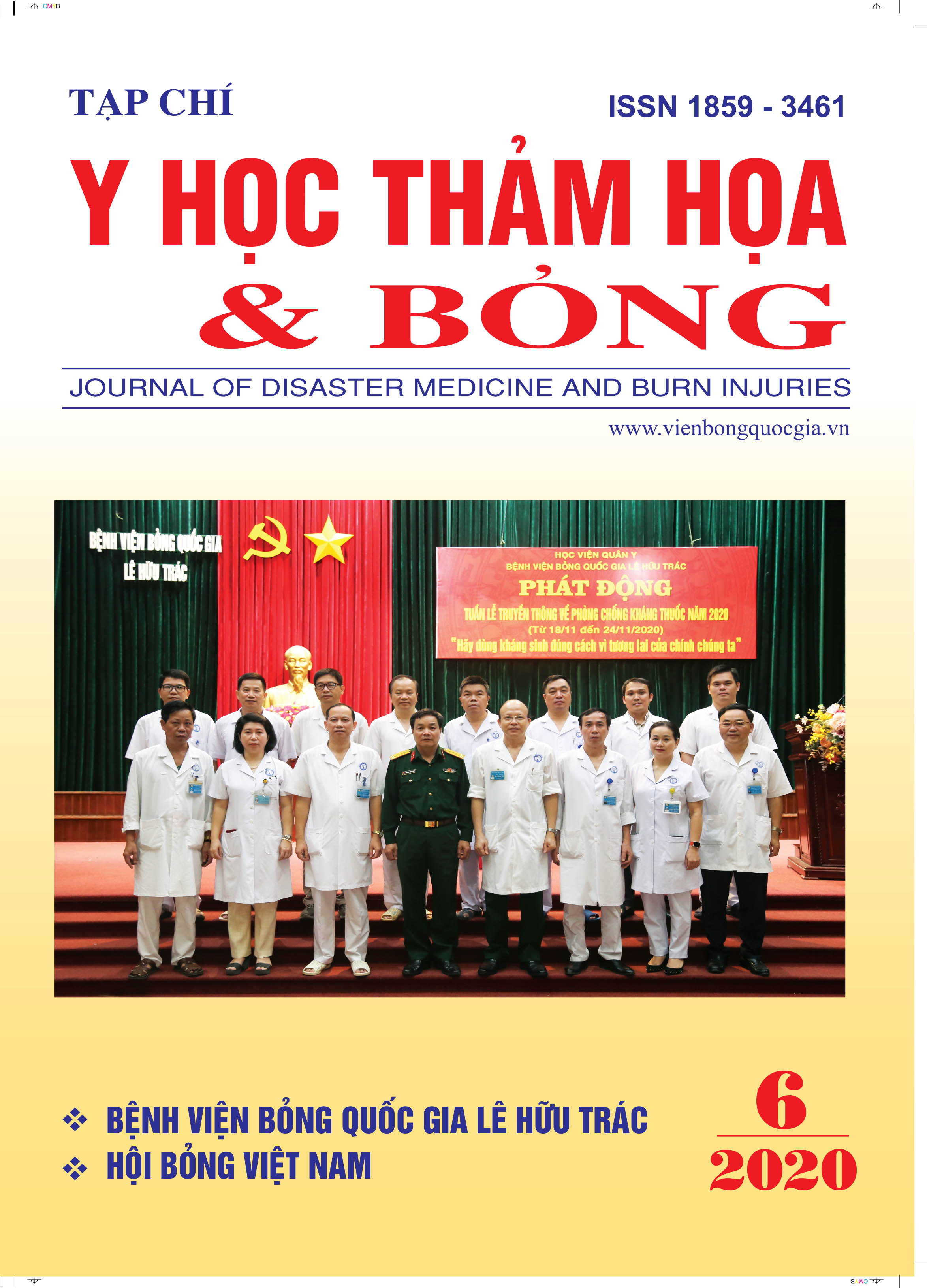Characteristics of alcoholic flame induced burn at the National Burn Hospital from 2017 to 2019
Main Article Content
Abstract
Objective: Research on the characteristics of burn caused by alcoholic flame for 3 years.
Subjects methods: This is a descriptive retrospective study of clinical data of burn caused by alcoholic flame admitted from 2017 to 2019 including 968 patients in the ICU, Adult, pediatric departments.
Results: Average age was 26.4 ± 15.7 and most patients were male of 62.9% and living in rural of 53.5%. The average TBSA was 13%. Regarding the position of wounds, wound on limbs where the highest proportion. Pregnant women of 2.2% were mostly combination factors. Most patients were burned in the summer of 35.4% and 129 patients in July and 43 patients on the 1st of a month. The least patients were burned in winter and 30 patients in December and 17 patients on the 31st in a month.
Treatment method: For pediatric, there were 52.6% of parenteral feeding in the first 24 hours after burned while adult patients were 29.5%. Two times of surgery were mostly for pediatric and adult patients.
The length of hospital stay of pediatric patients was 23.7 days while adult patients were 16 days. The general portion of mortality was 0.7% including pediatric of 7.4% and adults of 7.2%. The trend of burn accidents decreased from 2017 of 36.7% to 2019 of 26.9%.
Conclusion: Burn caused by an alcoholic flame in Vietnam have great consequences and leaving many serious sequelae. From the above features to plan to reduce the burn rate and complications caused by alcohol flame.
Article Details
References
2. Chen X.-L., Guo F., Liang X., et al. (2010) Burns caused by alcohol-based fires in the household coal stove in Anhui Province, China. 36 (6), 861-870.
3. Guillaume E., Loferme-Pedespan N., Duclerget-Baudequin A. et al. (2013) Ethanol fireplaces: Safety matters. 57, 243-253.
4. De-Souza D., Manço A., Marchesan W., et al. (2002) Epidemiological data of patients hospitalized with burns and other traumas in some cities in the southeast of Brazil from 1991 to 1997. 28 (2), 107-114.
5. Ortiz-Prado E., Armijos L., Iturralde A. L. J. B. (2015) A population-based study of the epidemiology of acute adult burns in Ecuador from 2005 to 2014. 41 (3), 582-589.
6. Smolle C., Cambiaso-Daniel J., Forbes A. A., et al. (2017) Recent trends in burn epidemiology worldwide: a systematic review. 43 (2), 249-257.
7. Karki B., Rai S. M., Nakarmi K. K., et al. (2018) Clinical epidemiology of acute burn injuries at Nepal Cleft and Burn Centre, Kathmandu, Nepal. 80 (3), S95-S97.
8. Cheng W., Wang S., Shen C. et al. (2018) Epidemiology of hospitalized burn patients in China: a systematic review. 2 (1), 8-16.


